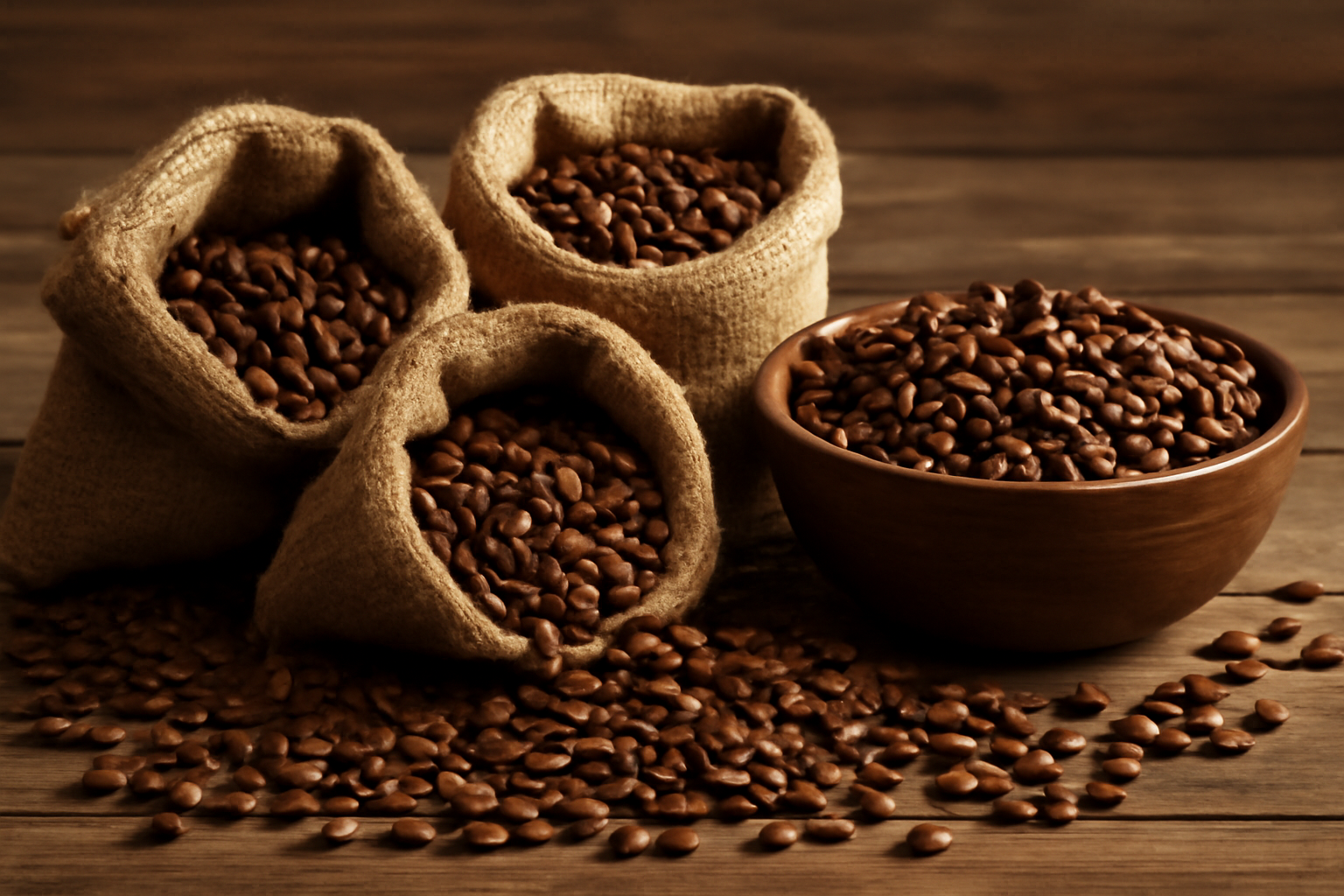Espresso is the foundation of many coffee drinks, from the classic cappuccino to the trendy flat white. To make the perfect espresso, you need to start with the right coffee beans. The beans you choose will directly impact the taste, aroma, and texture of your espresso shot, so it’s essential to pick the best one for your taste.
In this guide, we’ll walk you through the process of selecting the best coffee beans for espresso. We’ll discuss the key factors to consider when choosing beans, the different types of espresso beans, and how to properly store your coffee to ensure maximum freshness.
1. What Makes a Good Espresso Bean?
The perfect espresso is about balance. A good espresso should be full-bodied, rich, and have a robust flavor profile. To achieve this, the coffee beans must be carefully selected based on several key factors:
1.1 Freshness
Freshness is the most critical factor when it comes to choosing espresso beans. Coffee beans begin to lose their flavor soon after roasting, so using fresh beans will result in a much better-tasting espresso. Ideally, coffee beans should be used within 2 weeks of roasting. After this period, the beans begin to lose their aromatic oils and flavor compounds, which results in a dull, flat-tasting shot.
1.2 Blend vs. Single-Origin Beans
- Blends: Espresso blends are carefully crafted combinations of different beans from various origins. These blends are designed to provide a balanced flavor profile that works well in espresso. Blends often combine beans from regions known for their acidity with beans that provide body and sweetness, creating a harmonious shot. Blends are often preferred for espresso because they offer a consistent flavor profile.
- Single-Origin Beans: Single-origin espresso beans come from one specific region, farm, or variety. They are known for their distinct, unique flavors, such as fruity, floral, or nutty notes. While single-origin beans can make a delicious espresso, they may not always produce the same balanced cup as a blend, especially if you’re looking for a traditional espresso flavor.
1.3 Roast Level
The roast level of your coffee beans plays a significant role in the flavor of your espresso. When choosing espresso beans, it’s essential to pick the right roast for the flavor profile you prefer.
- Light Roast: Light roasts highlight the natural acidity and complex flavors of the beans. These roasts are often fruity and bright but can be too acidic for some espresso lovers. Light roasts are typically not used for traditional espresso, but some specialty espresso drinks use lighter roasts for a more unique and vibrant cup.
- Medium Roast: A medium roast offers a balanced flavor, with both acidity and sweetness. Medium roasts are often used for espresso because they produce a well-rounded shot that’s rich but not too bitter. They offer flavors like caramel, chocolate, and nuts, making them a versatile choice for most espresso drinks.
- Dark Roast: Dark roasts provide a bold, smoky, and intense flavor profile. While dark roasts are commonly used in espresso, they can sometimes result in a bitter, over-roasted taste. However, when properly brewed, dark roasts can produce a rich, full-bodied espresso with flavors of chocolate and roasted nuts.
1.4 Bean Origin
The region where coffee beans are grown significantly impacts their flavor. For espresso, beans from certain regions are more popular due to their balanced profiles. Here’s a look at some common coffee origins used for espresso:
- South American Beans (e.g., Brazil, Colombia): These beans often have a smooth, chocolatey flavor with mild acidity. They are excellent for creating a well-balanced espresso.
- African Beans (e.g., Ethiopia, Kenya): African beans tend to have fruity and floral notes with high acidity. These beans can add complexity to your espresso but may not be ideal for a traditional espresso shot.
- Indonesian Beans (e.g., Sumatra, Java): Beans from Indonesia are known for their earthy, spicy flavors and full body. They can add depth and richness to your espresso but may result in a heavier taste.
2. How to Choose the Right Espresso Bean
When selecting beans for espresso, it’s important to consider your personal taste preferences and how you like your espresso to taste. Here’s a simple guide to help you choose:
2.1 Go for Freshness
Always buy freshly roasted coffee beans from a reputable roaster. Ideally, purchase beans that have been roasted within the last two weeks, and always grind your beans just before brewing for the freshest cup.
2.2 Pick the Right Roast
If you prefer a balanced, smooth espresso, opt for a medium roast. For those who enjoy a darker, bolder espresso, a dark roast will provide that rich, intense flavor. Light roasts are an option for those who enjoy a more acidic and vibrant espresso but may not be for everyone.
2.3 Experiment with Different Blends
If you’re new to espresso, start by experimenting with blends, which are more forgiving and offer a consistent flavor profile. Once you’re comfortable with espresso brewing, try single-origin beans for more unique and complex flavors.
2.4 Understand Your Taste Preferences
If you prefer sweeter and chocolatey flavors, look for beans from South America. For fruity and floral notes, try African beans. If you enjoy a fuller, earthier flavor, Indonesian beans are a great choice.
2.5 Look for Specialty Coffee
Specialty coffee beans, which are graded 80+ points on the coffee quality scale, are grown in ideal conditions and processed with care. These beans are often more expensive but provide an exceptional espresso experience, with complex and unique flavor profiles.
3. Grinding Your Espresso Beans
The grind size is critical for brewing espresso. Espresso requires a fine grind, which ensures that the water can extract the maximum amount of flavor from the coffee in the short time it’s in contact with the grounds. If your grind is too coarse, the water will pass through too quickly, leading to under-extraction and a weak, sour shot. If it’s too fine, the water will struggle to pass through, leading to over-extraction and a bitter taste.
3.1 Burr Grinder vs. Blade Grinder
Invest in a burr grinder for consistent and precise grinds. Burr grinders crush the beans evenly, which ensures that every coffee particle extracts at the same rate. Blade grinders, on the other hand, can create uneven grinds, leading to inconsistent espresso shots.
4. Storing Your Espresso Beans
Proper storage is essential to maintain the freshness of your espresso beans. Coffee beans should be stored in an airtight container in a cool, dry place. Avoid storing them in the fridge or freezer, as moisture can damage the beans and cause them to lose their flavor.
4.1 Airtight Containers
Use airtight containers with a one-way valve to prevent air from entering the container while allowing CO2 to escape. This will preserve the freshness of the beans and prevent them from becoming stale too quickly.
4.2 Avoid Sunlight
Exposure to light can cause the oils in coffee beans to break down, leading to a loss of flavor. Store your beans in a dark cupboard or pantry, away from sunlight.
5. Recommended Espresso Beans
Here are some of the top espresso beans from popular roasters that are highly recommended for making espresso:
- Intelligentsia Black Cat Espresso: A popular espresso blend with smooth, chocolatey flavors and a balanced acidity.
- Stumptown Hair Bender: A versatile espresso blend with rich, caramel sweetness and fruity notes.
- Blue Bottle Bella Donovan: A medium-dark espresso blend with a rich, full-bodied flavor and a smooth finish.
- Lavazza Super Crema: A dark espresso blend known for its creamy texture and rich, nutty flavors.
6. Conclusion: Choosing the Best Espresso Beans
The perfect espresso starts with the right coffee beans. Whether you prefer a light, fruity shot or a dark, bold brew, there’s an espresso bean out there for you. The key is to find beans that match your taste preferences and brew them fresh for the best possible flavor.
Experiment with different beans, roasts, and blends to find the one that suits your palate. With the right beans and brewing technique, you’ll be able to craft an espresso that’s rich, flavorful, and satisfying.

I’m an economist with 15 years of experience in strategic planning and a lifelong passion for wellness and natural living. As a self-learner, I created Herbalife Balance to share insights on healthy eating, mindful habits, and an active lifestyle. Tennis enthusiast and nature lover, I believe in balance as a path to well-being. Through this blog, I help others live healthier, more conscious lives.

